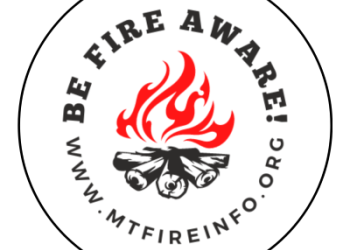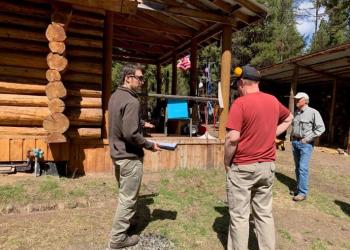Prevention
On the Lolo National Forest, we focus our fire prevention and mitigation efforts on preventing unwanted or accidental human-caused fires. It may be as simple as NOT lighting that campfire when conditions are dry and windy, or NOT throwing your cigarette butt out the car window, or NOT leaving a pile of burning trash unattended. Pay attention to current campfire or burning restrictions.
As part of our fire prevention strategy, we lead and participate in fire prevention educational programs and community activities, including school programs, fairs, rodeos, etc. If you see us at an event, please stop by to say hello! In addition, our Fire Prevention and Mitigation Specialists continually patrol the Forest to help educate users about safe campfire and burning practices, and to enforce our rules and regulations for the safety of all Forest users. Here is some information to help protect our Forest, and keep you safe, from unwanted wildfires.
Campfire Safety and Regulations
If you’re planning on having a campfire while visiting the Forest, please first check on current fire restrictions. Don’t forget to bring supplies to properly extinguish your fire, such as a bucket to hold water and a shovel to stir the fire as you put it out. Learn how to properly build, maintain, and extinguish a campfire from the video below.
Preparing Your Home and Property
If you have property near or adjacent to Forest Service land or live within a fire-prone/adapted ecosystem, consider educating yourself of proper defensible space information. Homeowners can take independent action to safeguard their dwellings in the event of a wildfire. In fact, they can increase the chances that their houses will be left standing after a wildfire with the right information, some advance planning, and regular maintenance. Learn how you can reduce your wildfire risk at Wildfire Risk to Communities website.
Each year, hundreds of homes across the country are lost to wildfires. Studies show that approximately 80% of these homes could have been saved with a properly treated Home Ignition Zone. The Home Ignition Zone, or HIZ, includes the home and its immediate surroundings out to 200 feet. We divide the HIZ into four sub-zones: the Immediate, Intermediate, Extended, and Outer Zone. Simple tasks within these zones can greatly reduce your home’s wildfire risk. Such tasks include removing debris from rooftops and gutters, regularly raking needles and leaves away from the home, and pruning up lower tree limbs. When preparing for wildfire, always begin at the home and work your way out.
Montana Fire Information

Fire has always been an important part of the landscape in Montana. Learning to live with fire is critical to a safe and healthy environment and community. This website is your one-stop-shop for how to prepare for wildfire in Montana.
Firewise

The Forest Service partners with several other agencies to promote the FireWise Program which teaches property owners how to be proactive about reducing potential losses in wildfire-prone areas.
Smokey Bear

You are never too old or too young to help prevent wildfires. Here are some helpful tips: Never play with matches, lighters, flammable liquids, or fire. Tell friends about fire prevention and share knowledge about what to do in a fire emergency.


